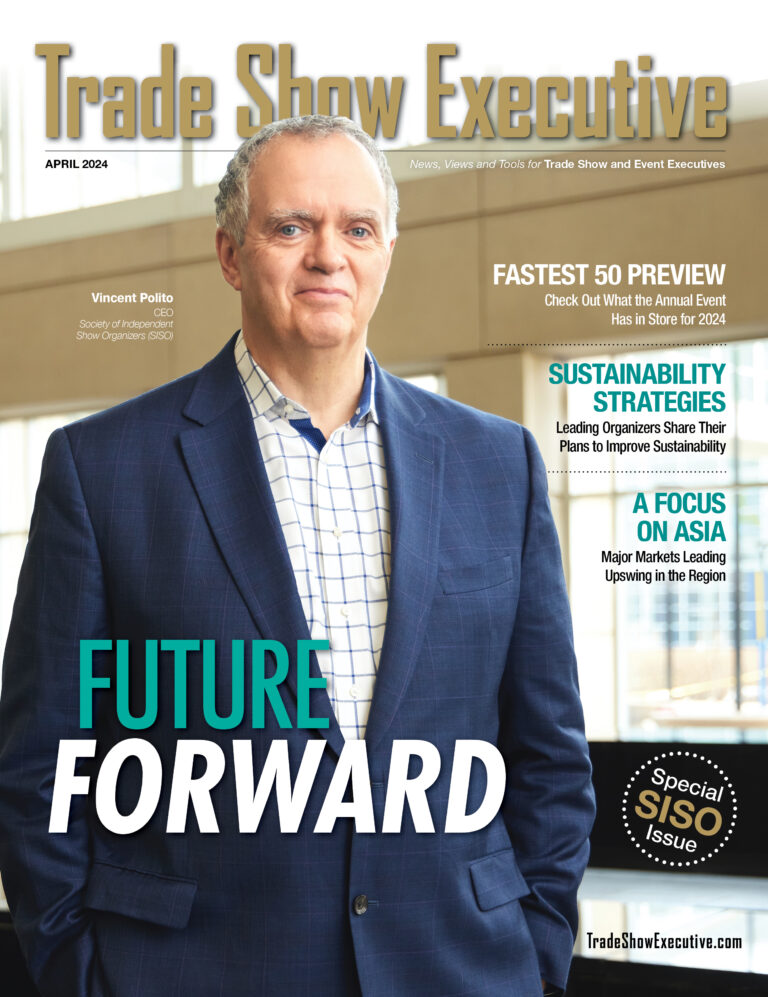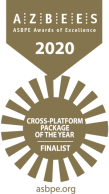Barcelona, Spain – More than 80 delegates, speakers and sponsors gathered at the fashionable Hilton Diagonal Mar Hotel and the adjacent Barcelona International Convention Center January 24-26 for the Fifth Annual International CEO Forum. The by-invitation-only event has very strict criteria for attendance; only CEOs or those with equivalent strategic responsibilities could attend.
Playing to his strengths and popular demand, organizer “Seven” Smulders opened the three-day event with Roger Martin-Fagg, economist and professor at Henley Management College in London. A perennial Forum favorite who can make the science of economics come alive, Martin-Fagg suggested that the world today faces a more risky trading environment than at any other time. He explained why oil is the key, and how the global economy is still powered by the United States with greater and greater involvement by China. China has affected the traditional relationships between nations, he declared, and has enabled the U.S. to spend more—7% more—than it earns. With very low-priced manufactured goods, China has distorted the measures of inflation in the U.S. and U.K. in particular.
Although China and Japan hold vast investments in U.S. bonds, it is in everyone’s interests to maintain equilibrium based on Chinese manufacturing capacity and American consumer demand for manufactured products. But the speaker warned that we may be at the peak of consumer demand, a precursor to a sharp slowdown in retail sales and consequent disruption of the global economy. He predicted a continuing weakening of the U.S. dollar vis-à-vis the Euro and the British Pound and cautioned that the runaway derivatives market in the U.S. (embracing about $94 trillion) could be in danger of collapse.
Business Leaders’ Panel
A trio of exhibition industry leaders: Bob Krakoff, president & CEO of Nielsen Business Media; Mike Rusbridge, chairman & CEO of Reed Exhibitions; and Bob Priest-Heck of United Business Media offered a wide-ranging discussion on the state of the industry. Krakoff described the activities of Nielsen Business Media (the former VNU) as those of an integrated marketing company structured by markets, not by media or countries. Nielsen Business Media operates in 110 countries and serves seven market sectors and 29 sub-sectors.
Rusbridge said Reed was focusing on aerospace as a prospective growth area, while estimating that 20% of the company’s business activity was tied to Asia and the BRIC (Brazil, Russia, India and China) nations; 25% in the U.S. and “a little less in Europe.” He anticipated more acquisitions in the U.S.
Priest-Heck, who later in the program was to describe in detail the rise and fall of the COMDEX brand, weighed in on the subject of company-sponsored or solo events. He believes they are not a threat to the traditional trade show, a position held by the other two panelists as well. Likewise, there was general agreement that the web is not a threat, but rather a perfect complement to expositions. Reed, for example, is testing a great many web-based business models with an eye to increasing the value of face-to-face marketing, extending the trade show’s value throughout the year.
Priest-Heck touched on how the “hassle-factor” impacts exhibitors’ and visitors’ desire to participate in an event. Visa problems, security inconveniences, rising costs of travel and accommodations, all bear on the decision whether to take part in an exhibition, he pointed out.
When asked about the current atmosphere for acquisitions, Krakoff said, “The industry is at the top of a cycle. Multiples are up…private equity companies have an appetite for all forms of media companies.” Rusbridge added, “There is a wall of cash looking for a home, and I don’t see a slow-down.”
The Complete Book on Venues
Cliff Wallace, CEO of the Hong Kong Convention and Exhibition Center, conducted a global survey of the exhibition venue situation and presented his findings. The results of his research, reflected in a 50+page presentation, offer a comprehensive analysis of venue statistics and the geographical distribution of halls, conference centers, and other meeting facilities around the world. This Opus Magnus, containing facts on exhibition facilities in the four corners of the globe, suggest important trends.
Global growth of exhibition space showed a substantial rise of some 40 % in the period 2000-2005. In those years, total exhibit space in Australia doubled; in Asia, the increase was on the order of 90%; and in Europe, around 30%. China leads the way in Asia with over 60% of the available exhibit space on that continent. Six of the top ten venues in terms of exhibition space are in China. Japan has three spots and Thailand (Bangkok) the other. With some 2.3 million square metres of exhibit space, China is catching up with Germany with 2.9 million square metres (U.S. totals around 8 million square metres). Wallace feels that venue development in China has slowed, but will explode with new sites to meet growing development of the trade fair industry there. He predicts that by the end of the decade, exhibition space in China will approach 4 million square metres.
Supply is Outpacing Demand
Will it be justified? Wallace believes that, in general, supply is outpacing demand, except perhaps in London and Mumbai (Bombay) where lack of space is a perennial problem. Commenting on the situation in the U.S.,Wallace notes, “Organizers running the largest shows with the greatest economic impact are offered favorable deals, due to the oversupply of space. An estimated 50 % of the organizers of major exhibitions are receiving some kind of discount and/or incentive to entice them to a venue.”
Turning to India, Wallace’s research revealed that with the fourth largest economy in the world and the youngest population, long-term economic growth will be easily sustainable and that exhibition activity will keep pace. However, trade fairs in India remain smaller than those in other Asian countries and revenues per fair do not reach half of what are recorded in Singapore, Thailand or Taiwan, according to Business Strategies Group. Two other areas in Asia deserve special notice: Singapore, where the government-sponsored Marina Bay Resort Complex will include 100,000 square metres for meetings and exhibitions, and Macao, where exhibitions and conventions play an important role in the plans of Sheldon Adelson to recreate his Las Vegas success in this Pearl River Delta property. (Adelson’s team won the contract to build the Marina Bay Resort Complex, as well.)
It’s All About Visitors
Another speaker that took a global view of industry trends was Doug Ducate, president and CEO of CEIR, the Center for Exhibition Industry Research. To get a valid picture for his presentation, “Visitor Trends in Exhibitions, A Global Perspective,” Ducate examined all available statistics from around the exhibition world. He warned early on that varying definitions make it difficult to reach unassailable conclusions. As a case in point, he noted that the definition of “a visitor” to a trade show might be one person passing through a turnstile once. But if that individual returns to the exhibition hall again and again during the course of the show, he is counted multiple times by organizers in some countries.
Armed with a mountain of research, conducted by Johnson Lambert for the CEIR Exhibition Industry Index, Ducate concluded that attendance at B-to-B events in the U.S. and Canada did drop substantially in 2001 and 2002. The phenomenon was traceable to industrial and IT shows but medical events continue to lead growth of all other categories of shows.
Globally, the effects of the events of September 11, 2001 stretched through the following two years. In fact, some sectors have never fully recovered from the falloff from that traumatic occurrence. Taken by continents, available data suggests that Europe shows a net gain of visitors to trade and consumer shows through 2004, but an increase in the number of events resulted in a lower average attendance per event. The cyclical nature of many European exhibitions also accounts for fluctuating totals, year-on-year. Asia presented a particular challenge in obtaining reliable data, however most data suggests rising attendance totals along with increased space bookings.
The research also noted that five new world-class venues have come on-line in Australia since 1988 and a ten-year growth trend has emerged. According to the Exhibition & Event Association of Australia, exhibitor satisfaction ranged from neutral to marginal with the total number of visitors and the quality of those visitors during the period 2003-2005.
While the Middle East is host to some 584 trade exhibitions spread across 17 cities with first-class venues, long-term statistics and figures were not available for the present study.
Key Verifiable Global Trends
Summarizing the research, Ducate noted these verifiable trends:
◦ Global visitor attendance has been flat to single-digit growth since 2000, with some exceptions
◦ Developing nations usually experience growth even if global trends point downward
◦ Foreign visitor numbers have eroded more than domestic attendance in most nations
◦ Merger and acquisition activity among corporations in many business sectors continues to negatively impact exhibition attendance and exhibitor participation
◦ Organizers are spending more on visitor promotion
◦ Governments are more interested in exhibitions
◦ Smaller vertical, boutique and niche events enjoy growth; and
◦ Sustained economic expansion triggers launches in growth industries.
There was a spirited discussion of Ducate’s conclusions and methodology at the close of his presentation. There was general agreement, however, that visitors are an important, if not the most important influence in the success or failure of an exhibition.
CPR For a Failing Trade Show
Robert Priest-Heck gave a behind-the-scenes look at damage control and turn-around strategies brought to bear on the COMDEX brand. From his vantage point as chief operating officer at Key3Media at the time, priest-Heck saw the writing on the wall when 9/11 struck on the opening day of the other bellwether, high-tech show: Interop. As he explained, the year 2002 was a tough year for a company carrying an interest load of $80 million. The following year saw continuing decline and led to the replacement of the senior management team. Relationship of 15-years standing went out the window and bankruptcy followed. At this point, more than a million dollars of research into “Understanding the Current Market,” allowing the cadre of survivors to discern the market shifts. From this, the team came up with a new set of guiding principles described by Priest-Heck as:
◦ Refreshing the Mission and the Vision of the company—Defining Values and Culture
◦ Developing Measurable (Strategic) Goals
◦ Committing to Measurement and Analysis (with changing situations)
◦ Developing Realistic, Repeatable Behavior
◦ Establishing Value Relationships within the Company
◦ Committing to a Cascading Message Plan
◦ Reviewing Organizational Structure—Establishing Clear Lines of Authority
◦ Maintaining Clarity of Rules and Results, and
◦ Reviewing Team and Career Paths
By disciplined adherence to these guidelines and many hard choices (the work force was reduced by 92%, and COMDEX was postponed, then canceled), Key3Media emerged from bankruptcy in five months and was renamed MediaLive International. Overhead was reduced by $100 million and 2005 proved to be the true, turn-around year. CMP acquired the assets of Media Live in January 2006 for $65 million.
Specialists Share Their Secrets
Danish futurologist and trainer Anne Skare Neilsen presented a light-hearted and entertaining talk on “Bridging the Gap from Idea to Success,” and Rob Chompff shared his secrets for predicting visitor behavior and database marketing. Chompff won the 2002 UFI Marketing Award for visitor marketing.
Accessing Associations Made Easier
The final presentation: “How Mid-to Small-Sized U.S. Associations Decide to Export Their Exhibitions” was the collaborative effort of Sam Lippman and Wayne Jacobs. The duo conducted an in-depth market study of association exhibiting habits and decision-making before analyzing and interpreting its results. They identified the criteria U.S. associations use when taking their shows offshore. They uncovered how the venue and overseas partners are selected and what is the preferred format for exhibiting outside of the continental U.S. Jacobs pointed out that associations like to work with associations, which is to say that sister groups abroad in the same industry or technology sector would create a “comfort level” for the association executive tasked with finding a suitable venue, partner or exhibition. Profit is not the main driver for export, and an export effort may be stopped once the objectives are achieved.
Lippman said that participation via an association pavilion or group presentation was the preferred format for entering a global marketplace. A stand-alone event or co-located participation, followed by a joint venture or licensed event are other alternatives. When determining whether to become involved in an overseas trade fair, demographics are most important. Reaching a new audience, that is, prospects not found at the U.S. show(s) is also a deciding factor. Having a “champion” or supporter on the board of the association is also an important part of the go/no go decision. (Trade Show Executive will publish a special expanded report on this session in an upcoming issue).
Lifetime Achievement Award to Alexeev
At the concluding Gala Dinner, Sergey Alexeev, CEO of Lenexpo in St. Petersburg, Russia and head of the International Union of Exhibitions and Fairs, was presented with the outstanding Achievement Award. The award recognizes his leadership in raising the standards for events in Russia and the CIS countries. (See: Are the Russian Fairs Coming of Age?; Trade Show Executive, August 2005.)
The next in the International CEO Forum series will take place January 23-25, 2008 according to Seven Smulders, organizer of the annual event. Delegates were invited to suggest a venue with Dubai, Abu Dhabi and Rome among the favored destinations. The location of next year’s Forum will be announced shortly.
Reach Seven Smulders at +31 65 1495445 or ceoforum@nchnl.nl











